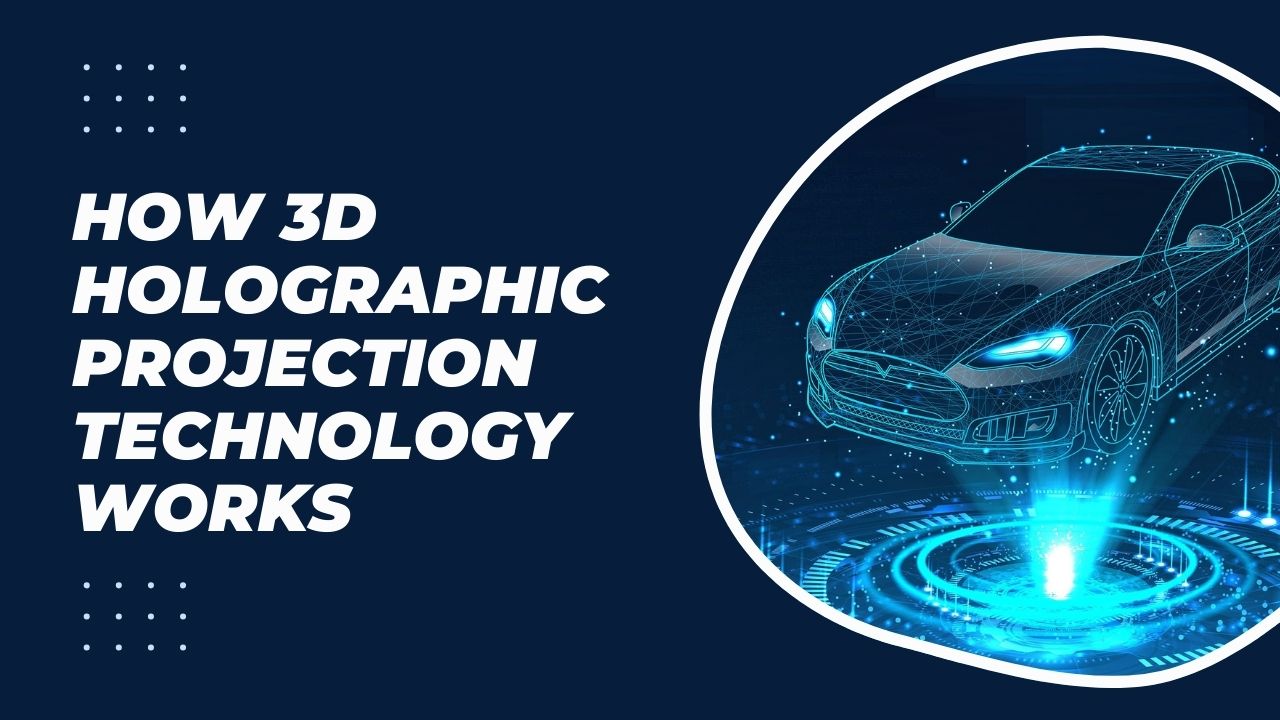3D holographic projections have almost become sanctuaries for the sci-fi freaks and tech geeks for decades. Holographic technology that allows 3D images to be visualized without the need for special glasses or headsets can be described as science fiber instead of a once-only fantasy. The most recent breakthroughs in technology became possible because of the scientists and engineers who made it their life goal to create a truly realistic, holographic 3D experience. In this article, we will explain how the 3D holographic projection technology works and also we will briefly look at the new methods researchers are developing to make it a plausible solution in the future.


Holographic Projection works and explores the innovative applications of Holographic Projection Displays
What is Holographic Projection?
The holographic projection is a technology that creates 3D images that come life by not using a screen, floating in the air. It is based on the light diffraction principle to create a three-dimensional picture and employs objects that seem to be floating in space. This new technology holds an abundance of potential uses in entertainment, education, and healthcare, where it could provide an out-of-your-world and engaging visual experience of the future. Now with its capability to create full-size or larger holographic projections, the holographic projection is the one reinventing the way information is exchanged and conversations are conducted.
The Basics of 3D Holographic Projection
The classic holography works by the superposition of light which is distributed over the the many-valued system of lenses. With regards to a holographic projection display, the purpose is to create a three-dimensional image or scene that can be seen from all angles, which thus results in an illusion of depth and spatialness.
Overcoming Technical Challenges
Among the main drawbacks, holographic 3D projection technology has the problem of scaling up the resolution of images and controlling depth. Generally, the narrow field of view, lower axial resolution or similar interference between layers of hologram have been limiting factors in the development of good holographic displays. Researchers found different solutions to those issues with the intent to make the holograms as realistic and undetached as they can be.
Recent Breakthroughs in 3D Holographic Projection
It has been less than a decade since we first heard about the development of the technology of 3D holographic projection. Essentially I submit that the new techniques that came up such as three-dimensional scattering-assisted dynamic holography enabled the creation of holograms with extremely high-density depth resolution. The use of diffusers and the scattering of light as well as the strategic combination of mirrors and spatial light modulators allows researchers to crunch more details into holo-projected imagery, contributing to better visual fidelity and immersion.
5 Benefits of Holographic Projection
- Realistic 3D Visualization – Holo projections take the viewed experiences to places that cannot be seen as real scenes.
- Interactive Viewing – Holograms allow you to view them from numerous perspectives giving a dynamic and interesting display.
- Versatile Applications – Hologram projections are used in entertainment, science, security, and storage of information.
- Secure Identification – Another result of this technology is that it provides for the development of watermarking and holographic features as part of the more secure identification process.
- High-Capacity Data Storage – The notion that holographic technology enables storing huge amounts of data in a very small space has made the information storage system outdated.
The Role of Artificial Intelligence
Artificial Intelligence (AI) plays a massive role in our daily lives as they are in use in various sectors. Artificial intelligence is using its influence to advance the acceptance of 3D holographic projection technology. As of today, scientists have come up not only with neural networks but also tensor holography which can quickly generate holograms in real-time with light computational requirements. These are the AI-driven methods that have proven to be very effective not only in speeding the process up but also in efficiency. In turn, those methods have been an opening to real-time 3D holography applications.
Applications and Future Prospects
The hallmarks of 3D holographic projecting technology start from entertainment, virtual reality and beyond as well. Whether it’s about using 3D printing for making optical encryption or using microscopy and medical visualization, the list of applicability for these types of holograms is long. With time, technology will continue to advance and holographic displays will turn out to be a common means of communication. Researchers will strive to improve existing techniques and invent new algorithms to achieve this purpose.
Conclusion
So, the progress in 3D holographic projection technology conveys a substantial step ahead in the field of visual display technologies. Developing technologies and innovations together with research is bringing more possibilities and it is easy to realize that the “mother of all inventions” is the projection of hologram-like images as part of everyday life. As scientists keep breaking the barriers that previously held back progress, there is a future that remains exciting for many to be open and welcome the new age of 3D holographic experiences that can change the way people relate with the so-called digital and physical world. To learn more about holographic displays, connect with Vision3D customer care number – +91-8971953451.
